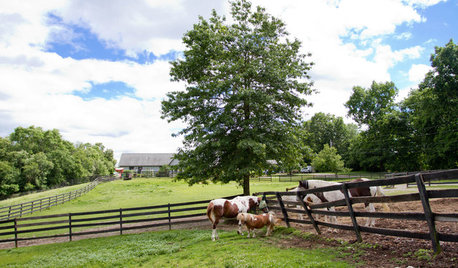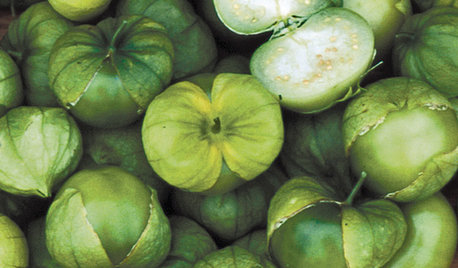2nd patch - tomatoes
digit
16 years ago
Related Stories

EDIBLE GARDENSSummer Crops: How to Grow Tomatoes
Plant tomato seedlings in spring for one of the best tastes of summer, fresh from your backyard
Full Story
COLOR10 Reasons to Make a Splash With Tomato Red
You won’t duck at these tomatoes. See how bold red shades can play up architecture, light up a dark spot and add drama
Full Story
ARCHITECTUREHouzz Tour: Fresh Ideas in a Former Tomato Packing Shed
A formerly metal-clad structure is now a beautiful wood home designed to capture the light and preserve open space
Full Story
URBAN GARDENSIn London, a Crowded Patch of Grass Becomes a Patio for Entertaining
A chic combo of wood siding, clever plantings and lots of elegant sandstone transforms a plain garden into a stylish space
Full Story
HOUSEKEEPINGQuick Fix: How to Patch a Drywall Hole
Dents and dings disappear, leaving your walls looking brand new, with this fix that even a novice can do
Full Story
EDIBLE GARDENSHow to Grow Your Own Sweet Summer Crops
This guide will help any gardener get started on growing the freshest warm-season veggies and berries for summer
Full Story
FARM YOUR YARDHouzz Call: Home Farmers, Show Us Your Edible Gardens
We want to see where your tomatoes, summer squashes and beautiful berries are growing this summer
Full Story
HOUZZ TOURSHouzz Call: Show Us Your Farmhouse!
Bring on the chickens and vegetable patches. If your home speaks country, it might appear in a featured ideabook
Full Story
HOUZZ TOURSMy Houzz: Country-Chic Dutch Family Home
An organizer lightens up a dark 1970s farmhouse on a Netherlands tomato farm with open space and soothing shades of gray
Full Story
SUMMER FRUITS AND VEGETABLESSummer Crops: How to Grow Tomatillos
Grow this Mexican native for the freshest salsa verde — and for fewer problems than its tomato cousins
Full Story0






digitOriginal Author
aliceg8
Related Discussions
How does overwintered tomato perform the 2nd year?
Q
Tomatoe planting questions for 2nd year grower
Q
2nd batch of tomatoes?
Q
2nd How to Grow the Tomato and 115 Ways to Prepare it for the Tab
Q
david52 Zone 6
aliceg8
highalttransplant
david52 Zone 6
digitOriginal Author
Skybird - z5, Denver, Colorado
david52 Zone 6
aliceg8
stevation
Skybird - z5, Denver, Colorado
david52 Zone 6
aliceg8
digitOriginal Author
highalttransplant
aliceg8
david52 Zone 6
highalttransplant
cnetter
Skybird - z5, Denver, Colorado
cnetter
spyfferoni
digitOriginal Author
digitOriginal Author
aliceg8
digitOriginal Author
singcharlene
jaliranchr
david52 Zone 6
aliceg8
digitOriginal Author
digitOriginal Author
david52 Zone 6
digitOriginal Author
aliceg8
spyfferoni
digitOriginal Author
david52 Zone 6
digitOriginal Author
dafygardennut
david52 Zone 6